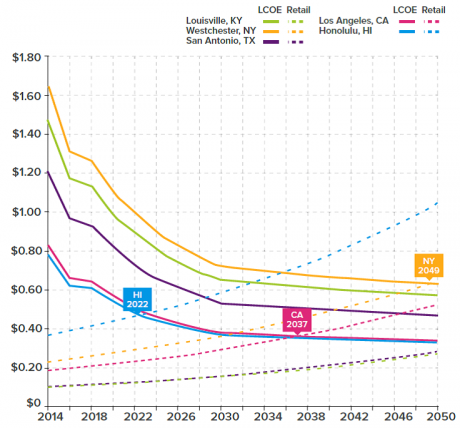Will batteries blast-off or bomb?
Battery energy storage is a hot topic for Climate Spectator readers. It seems there is an incredible appetite to learn what are the technological options and what are their costs and prospects.
This clearly indicates that there’s businesses who can see a market opportunity for batteries and are eagerly looking at how they can make the economics work.
Balanced against this is that the energy forecasting experts in the established institutions of the International Energy Agency, the Australian Energy Market Operator and the US Energy Information Administration, to name just a few, don’t seem to foresee batteries becoming a significant part of our electricity system in a few decades time.
In addition, analysts who first pushed the envelope of exploring 100 per cent renewables scenarios for Australia, Beyond Zero Emissions and the University of NSW, have also opted to rely on solar thermal energy storage, pumped hydro and the use of biogas powered peaking turbines rather than batteries.
For example, the International Energy Agency in its recent study exploring the integration costs for as much as 45 per cent wind and solar power, didn’t consider the use of batteries at all. In its opinion, they just aren’t needed and significantly cheaper options exists to manage output variability from solar and wind.
In the IEA’s study it used a concept it entitled the ‘levelised cost of flexibility’, which is an attempt to compare the different technologies on how much they cost to shift a unit of energy (a meagawatt-hour) across time or space to balance out changes in output from wind and solar power.
So, for example, you might have so much wind power in South Australia that it exceeds demand but with a transmission line into Victoria you can shift the excess megawatt-hours into Victoria where there is unmet demand.
Also, it’s possible that a well-insulated house could work just like a battery by storing thermal energy. So you could turn on the air-conditioner a few hours before you get home while the sun is shining and solar PV is pumping out electricity. By the time you get home at 6pm as output from the solar PV tails off you can also turn down the air-conditioner to consume less megawatt-hours, as the house will retain a comfortable temperature without it. Also, with a modern gas turbine it can be turned up or down very quickly while costing very little to construct (say, $700 per kilowatt).
All of these options in essence can be seen as competitors to batteries for the ability to shift or flex power demand and supply, and many are noticeably cheaper at achieving this purpose, with the IEA finding:
However, this study did not take into account the fact that electricity carries a vastly different price when bought by a household at retail rates, instead it focused on wholesale energy market costs. This kind of approach led many analysts to be blindsided by the growth of solar PV in household and commercial markets, where retail prices can be four or more times greater than wholesale rates.
The beauty of many battery technologies such as lithium-ion is their compact size and portability, whereas you can’t move a pumped hydro power plant to wherever you need it. This allows batteries to offset the substantial costs of electricity network poles and wires, which make up more than half the cost of retail bills.
Those analyses which look at retail electricity rates, or take into account the potential to offset network infrastructure costs, tend to be more optimistic about the economic viability of battery technology.
As an illustration, the sustainable energy think tank the Rocky Mountain Institute foresees that 'solar plus batteries' could be a cheaper option for households as soon as 2022 in Hawaii, due to that state's high retail electricity costs and high levels of solar radiation. If you charted a similar chart for many locations in Australia you’d find an intersection point between solar plus batteries and retail electricity prices that sits somewhere between that of Hawaii and California. Indeed, if electricity wasn’t heavily subsidised in the Ergon network in Queensland and the Horizon Power network in Western Australia, then they’d appear very similar to Hawaii.
Solar batteries versus utility supplied electricity in different US locations ($ per kilowatt-hour)
Source: Rocky Mountain Institute (2014)
Such differing findings suggest that we need to be extremely careful in coming to any hard conclusions about what might be the future shape of our electricity system. At present batteries look expensive. But there’s lots of clever people working on finding ways where batteries plus solar will work economically.
No one should pretend to be certain about what the technological answer will be to our future energy needs, but at least we know we’re not lacking for options.

















